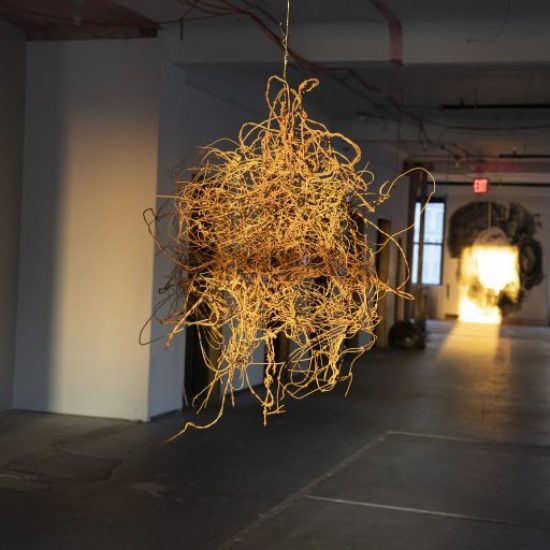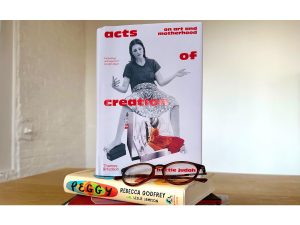In 2001, I curated an exhibition1 that connected Christopher Wool’s paintings to his photographs. The exhibition linked a series of silkscreen-only paintings with photographs of Manhattan’s Lower East Side, previously reproduced in the East Broadway Breakdown book,2 and a series of studio Polaroids he used to evaluate his in-progress paintings. Exhibiting them side by side not only highlighted the reproductive process at the core of Wool’s practice, but it also revealed how his abstraction was situated in the space and time he inhabited. Twenty years later, a new series of books, dedicated to photographs taken in West Texas where Wool now spends part of his time, was the starting point of an exhibition that took place in Brussels in 2022 and ultimately became SEESTOPRUN, the 2024 project at 101 Greenwich.
Road, Swamp, Yard, and Westtexaspsychosculpture are four series of photographs, gathered in four books.3 Road and Westtexaspsychosculpture are straightforward black-and-white images of the landscape around Marfa. Road is a series of empty dirt roads, bushes, and skies in carefully hued grays. Westtexaspsychosculpture shows scraps of metal, tires, tarpaulins, and other everyday junk. The aridity and monotony of the West Texas landscape have seeped into Wool’s work as the grit and energy of the streets of NYC did in the ’90s.
Wool’s photographs are not source images for his paintings, works on paper, or sculptures, but they show us what he looks at and, more importantly, how he looks at it. His gaze focuses on the dry, the dirt, the mess, the glitch, the repetition, not to denounce or capitalize on their abjection but to embrace them as liberating and generative tools. By looking at the disregarded with care and attention, Wool opens an unseen world that becomes a territory for both formal and existential expression. His early word paintings are characterized by their use of derogatory words (FOOL, AMOK, TRBL, etc.) and even more so in the Black Book, composed of 22 nine-letter words such as HYPOCRITE, PSYCHOTIC, and EXTREMIST. However, it is the subsequent patterns and abstract work that would come to engender Wool’s painterly language. With their controlled play on erasure, indecision, obliteration, and cover- up, they gave rise to a painter who claims failure and constraint as his own. Deconstructing the artist as hero and as ego, Wool becomes a catalyst for his landscape of dilapidated streets, stray dogs, oil stains, graffiti, his own burned-down studio,4 and desert paths.
The starting point of SEESTOPRUN was a desire to escape the neutrality of contemporary art spaces, galleries, and institutions and to look for a place in NYC that would allow Wool’s work to interact with something other than a blank slate. Wool traces back his awareness of the physical interplay between works and environment to his time in Texas.
Westtexaspsychosculpture is the first manifestation of how Marfa ultimately led Wool to sculpture. If his photographic assemblage of a junkyard’s accidental sculptures turns Wool towards the three-dimensional, it is his gathering of bits and pieces of wire during his walks in Marfa that open a process to actualize it. These small wire sculptures5 are the origin of all his recent cast sculptures. Their similarity to the lines of his drawings at first amused him, before he realized that these flattened pieces of wire could be reconfigured into models for much larger works. He became interested in how they interacted with the space of his studio. He wanted to create sculptures that engaged with their settings, as opposed to what he calls modernist “plop” sculptures. For the cast sculptures, scale became the next question, as blowing up a very small object can sometimes lead to a loss of definition. By working digitally, Wool found a way to avoid losing the details of the wire sculptures through enlargement and, by revealing all the welds in the cast sculptures, to render visible the process of assembly. Wool says: “To me it’s a lot like looking at a silkscreen painting where you can see it’s handmade, but it’s a mechanical hand.” In his hanging wire sculptures, which are not cast, the rust and barbs give them a menacing aspect, while their floating twists and turns evoke the lines found in some of Wool’s paintings and works on paper.
The works on paper are part of several series that, similar to the photographs, are each linked to a book, both in origin and in destination. They are a complex layering of silkscreen, printed pages, and paint. For instance, one group is painted on top of a silkscreen on paper—the original silkscreen coming from a series of large paintings based on a small Rorschach work Wool made in the ’80s. Those are printed in a book (book 3), the pages of which Wool will reprint in a forthcoming book (book 5). Another group, composed of six works, is painted on top of an old silkscreen print from the late ’90s that Wool had left unfinished. At the time, he had decided to draw on top of the silkscreens with a magic marker, then scan them. That was the first time Wool scanned an existing work. Twenty years later, he painted on the silkscreens and printed them as a series in another book (book 4). Digital manipulation of images has become increasingly central to Wool’s artistic process. Photography was at the heart of his early silkscreen works, allowing reproduction and layering but also introducing a mechanical distance from the gesture; with digital tools, Wool can use his own work as source material, creating complex circulation between images and scales.
The origin of the paintings in this exhibition can be traced back to Wool’s works on paper. A small piece of a monotype, a print, or a drawing is enlarged, silkscreened, doubled, or turned upside down; the molecular becomes monumental, a detail becomes a landscape.
The mosaic in this exhibition is also based on such a drawing. Wool was recently commissioned by Brookfield Properties to create a work for their new Manhattan West development.6 He used the scale of the project to experiment with yet another process of mechanical translation, this time in a handmade stone-and-glass mosaic. The mosaic in SEESTOPRUN is a smaller version of the one installed on Ninth Avenue. Originally to be installed in Marfa, it was ultimately a perfect fit at 101 Greenwich. If the silkscreen process used for the paintings tends to blur the definition of the original image, the small tiles of glass and stone used in mosaic allow for each of its inflection to come alive.
In Wool’s own words: “Each and every work in the exhibition is initiated in some sense by a reproduction of a previous work.”
SEESTOPRUN takes place in a post-COVID New York, with its empty storefronts and vacant office spaces. It is located in such a space: high up, raw, situated, permeated by the city, its history, and its fabric. It takes place as an unmediated experience, outside market and institutional rules. It takes place at the intersection of multiple connections: those that link the artist with what surrounds him, those that connect the works themselves, and those that arise between the work and its viewers.
—Anne Pontégnie
Curated by
Anne Pontégnie
at 101 Greenwich St, New York
until Juley 28, 2024




